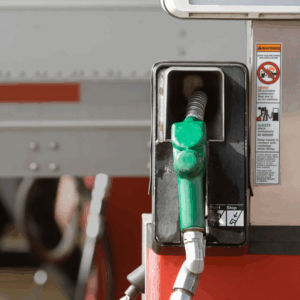Watch Out for These 7 Common Things That Can Cause Your Engine to Overheat in Colorado Springs
Do you pay attention to your dashboard temperature gauges or warning lights? Your engine is designed to operate within an optimal temperature range, which varies from car to car based upon the manufacturer’s design specifications.
 If it exceeds this temperature (or goes too low), your temperature gauge or a warning light will alert you. Of course, steam coming from under the hood will also alert you to a temperature problem (not good!).
If it exceeds this temperature (or goes too low), your temperature gauge or a warning light will alert you. Of course, steam coming from under the hood will also alert you to a temperature problem (not good!).
Your dashboard warning lights are there for a reason and should be taken seriously. Overheating in your engine can do significant damage in a relatively short period of time. If you see these signs, slow down, safely pull to side of the road, and turn your vehicle off.
CAUTION: No matter what, NEVER remove the radiator cap on a hot engine! If it has overheated, releasing the cap will shoot 212-degree steam and boiling coolant toward your upper body and face. Let it cool down for 1-1½ hours before removing the cap.
You may think, “I only have a couple of miles to my destination – surely I can make it there and then decide what to do, right?” Don’t do it!!! $80-100 in towing charges is a small price to pay, when the resulting damage could run into several thousands of dollars to repair.
The 7 most common things that can cause an engine to overheat are:
· Cracked and leaking hoses, loose clamps (anything that results in loss of coolant fluid)
· Defective water pump, cracked and leaking radiator, or defective radiator cap
· Thermostat stuck closed
· Lack of oil and lubrication
· Electric radiator driven cooling fan not operating
· Belt driven cooling fan not operating (usually a loose or broken belt)
· A “blown” head gasket that allows coolant into the combustion chamber or the oil pan
Recently, one of our customers, at Honest Accurate Auto, noticed her temperature gauge was high when she was sitting at a stop light, but when she started moving, the air flow made the temperature gauge go down. In the few miles it took to get home, the head gaskets failed, which required replacement of the head gaskets and rebuilding of the heads (over a $2000 repair).
Proper maintenance and inspections will reduce the chance of your car overheating, although certain parts may malfunction with no warning. However, if caught early, the problem may be a relatively simple and inexpensive fix. Hoses, clamps, and thermostats can be replaced. Competent auto repair facilities will inspect all visible cooling system components at each oil change.
However, continued overheating can result in cracked or warped heads (very expensive). Your cooling system is a closed loop design that allows expanding and contracting coolant to flow into and out of the coolant overflow reservoir. Any damage that allows coolant to escape into the cylinders, or that allows exhaust fumes into the coolant system, will not allow the system to dissipate the extreme heat that is generated when the engine is working.
As always, consistent car maintenance, including replenishing fluid reservoirs and maintaining clean oil will go a long way in preventing overheating.



